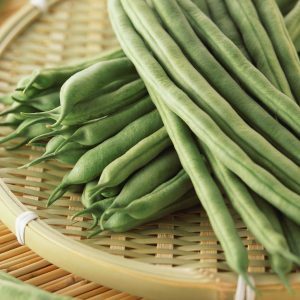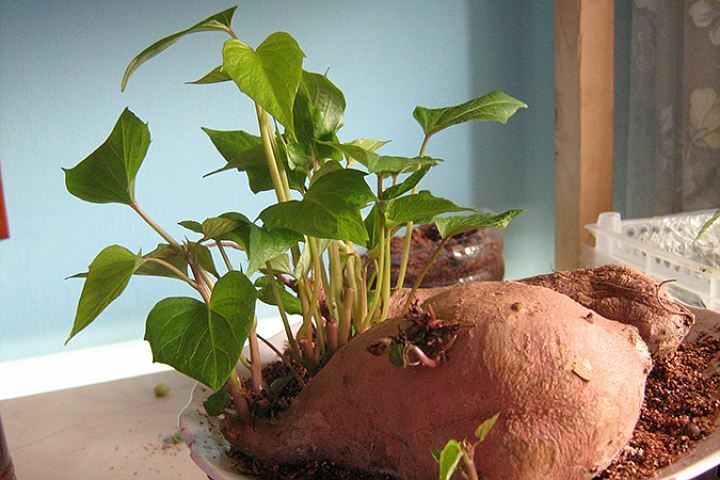Nutrition for diarrhea in an adult: do's and don'ts
Diarrhea (diarrhea) is a digestive upset caused by various causes. Medication alone is not enough to treat diarrhea. The patient must reconsider his daily diet and follow a strict diet, because nutrition for diarrhea in an adult is one of the methods of dealing with an unpleasant ailment.

Nutrition for diarrhea in an adult
Content
- 1 When should you change your diet?
- 2 When should you seek medical attention?
-
3 Features of the diet for diarrhea in an adult
- 3.1 Video - Basic principles of nutrition for diarrhea
- 4 Allowed foods for diarrhea
- 5 Prohibited products
-
6 Healthy recipes for diarrhea
- 6.1 Blueberry jelly
- 6.2 Pumpkin puree soup
- 6.3 Cheese casserole
- 6.4 Meat broth with egg
- 6.5 Carrot puree
- 6.6 Rice porridge with chicken fillet
- 7 Diarrhea menu for 3 days
- 8 Returning to the old diet
When should you change your diet?
Loose stools can be caused by minor dietary errors such as fatty foods, unwashed fruits, etc. In such cases, digestive upset is short-lived. It is enough for the patient to refuse the product that caused the diarrhea. A diet is necessary in case of deterioration in health. You also need to revise your menu when diarrhea lasts more than three days.

Seek medical attention if diarrhea persists for several days
When should you seek medical attention?
Diet foods can help you get rid of the disorder in no time. However, if a person is seriously ill, giving up the usual menu will not be enough. Medical assistance is needed if:
- the patient is an elderly person;
- diarrhea is accompanied by sharp abdominal pain;
- diarrhea did not go away after 4-5 days of dieting;
- the disorder is accompanied by an increase in temperature;
- blood is noticeable in the feces;
- diarrhea is accompanied by nausea or vomiting.
Diarrhea itself can also lead to a deterioration in well-being. Loose stools can lead to dehydration and anemia. These conditions of the body require medical intervention.
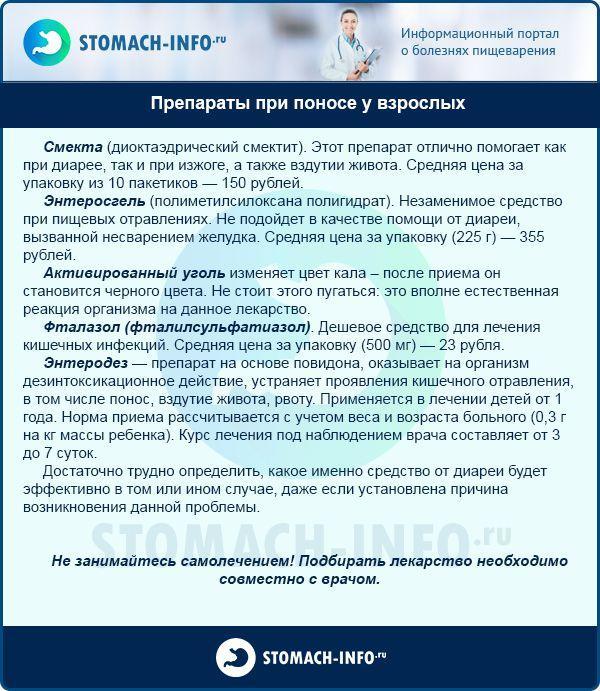
Drugs for diarrhea in adults
Features of the diet for diarrhea in an adult
The patient's diet has its own characteristics, which must be taken into account when drawing up the menu:
- In acute diarrhea, food should be completely discarded and replaced with liquid. At the same time, it is unacceptable to refuse food for the entire period of the diet. Due to the increased intestinal motility, most of the vitamins and microelements necessary for the body do not have time to be absorbed into the blood. Vitamin starvation may begin, worsening the patient's condition.
- Diet for diarrhea involves limiting the use of foods high in carbohydrates and fats. The patient needs protein foods.
- Food must be boiled or steamed. Neither hot nor cold food is suitable for the patient. Optimum temperature of food is + 35Cº.
- It is necessary to take food in small portions, at least five times a day. With diarrhea, the patient may be thirsty. However, the liquid also needs to be taken in small portions at intervals of 20-30 minutes.
It is necessary to abandon the use of drugs that inhibit intestinal motility. With weak peristalsis, toxins are removed more slowly, and food is processed worse. It is recommended to take sorbents three times a day one hour before meals. These drugs speed up the elimination of toxins from the intestines.
Video - Basic principles of nutrition for diarrhea
Allowed foods for diarrhea
- Meat. It is advisable to serve the meat in the form of meatballs or cutlets. Preference is given to lean varieties - veal, rabbit or chicken. In order not to cause irritation of the intestinal mucosa, you need to choose a more familiar variety. Chicken is best absorbed. Red meat should be avoided for digestive disorders.
- Low-fat fish. Meat dishes can be replaced with fish dishes. Use of other seafood (shrimp, mussels, etc.) should be carefully or completely abandoned. A complete ban is imposed in the event that before the illness the patient has never consumed or used very rarely selected seafood.
- Broths and soups. Meat or fish for making broth or soup should also be low-fat. It is advisable to add some breadcrumbs to the broth. The soup should be composed of a small amount of ingredients. Enveloping slimy soups will benefit. However, if the recipe contains irritating ingredients, it should be discarded.
-
Porridge. For the preparation of cereals, it is recommended to use buckwheat, oatmeal or rice groats. Semolina is not suitable for a patient with diarrhea due to lack of nutrients. In addition, semolina is boiled in milk, the use of which is limited for diarrhea. All cereals must be boiled in water. With acute diarrhea, the patient needs rice porridge, which has anchoring properties. But when the symptoms of diarrhea ease, you need to switch to oatmeal and buckwheat. Eating large amounts of rice causes constipation.
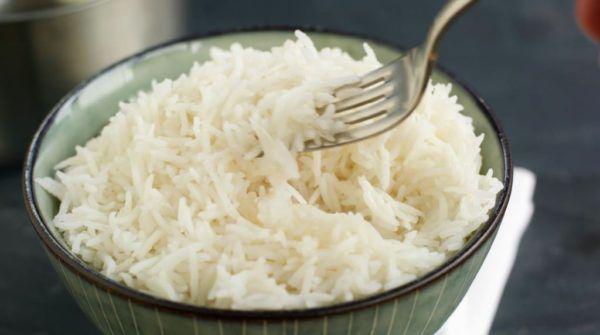
Eating rice is good for diarrhea.
- Eggs. This product is permitted in the form of an omelet. Eggs can be added to foods that are boiled or steamed.
- Liquid. You can cope with dehydration with herbal teas, compotes, jelly and water. Dried fruits should not be used to prepare the drink. Only fresh fruit is suitable. The use of sour berries is unacceptable. They irritate the lining of the stomach and intestines. Kissel should be prepared at home from fresh berries, fruits and starch. You cannot buy a ready-made mixture. Factory-made jelly may contain unnatural ingredients that cause irritation. The water must be clean and non-carbonated. It is permissible to use ordinary boiled tap water.
- Vegetables. Allowed the use of vegetables, steamed or baked. At the same time, heat treatment should not destroy vitamins and other useful substances. The patient can prepare a dish of pumpkin, broccoli or carrots. Mashed potatoes will be beneficial.
Carefully! Vegetables containing a large amount of fiber are not suitable for the patient.
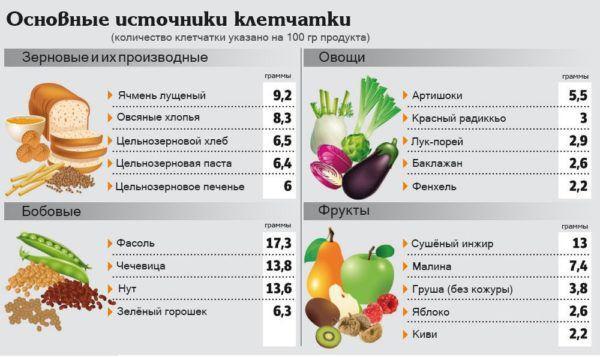
High fiber foods
Prohibited products
- Some vegetables. Cabbage is prohibited both fresh and sauerkraut. This vegetable contains fiber. And acids, natural and arising during fermentation, irritate the mucous membrane.
- Fresh fruits. Apples and pears can be baked without sugar or other flavor enhancers.
- Spices, condiments. Salt stays in the diet as it helps fight possible bacteria in the gut. Other flavor enhancers should be discarded so as not to irritate the digestive tract. For the same reason, the ban is imposed on the consumption of garlic and onions.
- Marinades, fried, smoked and salty foods. It is very difficult to digest such food. Salt is used only as a condiment and in limited quantities. Products for which this substance was used as a preservative are prohibited.
-
Citrus and exotic fruits. A product that is unfamiliar to the patient may worsen diarrhea. The acids in citrus fruits act as irritants.
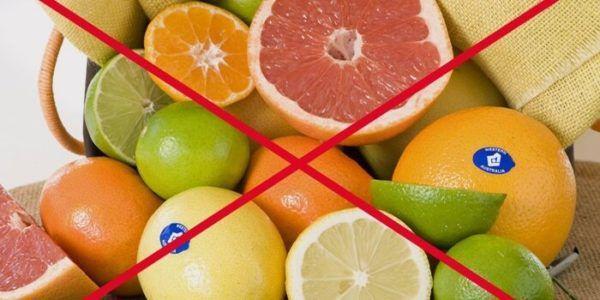
Citrus fruits are strictly prohibited for diarrhea.
- Fatty fermented milk products. The use of low-fat or low-fat fermented milk products in isolation is also undesirable. Sour cream or kefir can be added when cooking boiled foods or steamed dishes. Fresh milk is prohibited due to its ability to cause bloating and increase inflammation.
- Semi-finished products. These products contain a large amount of unnatural ingredients and preservatives. The patient is also prohibited from any stale food. If the soup was prepared more than a day ago, it cannot be eaten with diarrhea, even if the dish remains edible. You need to prepare food for the patient immediately before use.
- Alcoholic or caffeinated beverages. Alcohol and coffee complicate the course of the disease.
- Carbonated drinks. Lemonade contains dyes and other unnatural ingredients. The gas irritates the intestines.
- Black bread, mushrooms and legumes. These foods increase intestinal motility.
- Confectionery and sweets. If it is difficult to give up sweets, you can replace the confectionery with white croutons with raisins.
There is no complete ban on pasta. However, they should be eaten without sauce and butter, not every day.
Healthy recipes for diarrhea
Blueberry jelly
Dissolve 4 tbsp in cold water. l. starch. In parallel, prepare a decoction of 2 liters of water and 200 g of blueberries. The starch should be poured into the broth and, stirring, cook for three minutes. The drink should cool down, and then it should be taken 1 glass 3 times a day. Instead of blueberries, you can use bird cherry, mountain ash or currant.
Pumpkin puree soup
The pumpkin must be peeled and cut into pieces. Each piece is wrapped in foil and baked at 180 ° C. Then the pumpkin is crushed with a blender. Mix 200 g of milk with 100 g of water and boil, and then add pumpkin. The soup is served with loaf croutons.
Cheese casserole
To prepare a casserole, you need to take 200 g of cottage cheese and mix with 1 tbsp. l. kefir. You also need to add 70-100 g of semolina and 1 raw egg. The mixture is spread on a baking sheet and baked at 180 ° C.

Cheese casserole
Meat broth with egg
For the preparation of this dish, you can use only lean chicken meat, which is considered dietary. Beat the raw chicken egg and pour into the freshly cooked broth. For beauty and taste, a small amount of dried herbs should be added to the dish. Salt is used in a minimal amount.
Carrot puree
Two medium carrots should be finely chopped and simmered in a saucepan until softened. Cooking should be done in water. Then the carrots are chopped in a mixer or using a blender. If the patient is recovering, 1 tsp can be added to the puree. l. low-fat or low-fat sour cream.
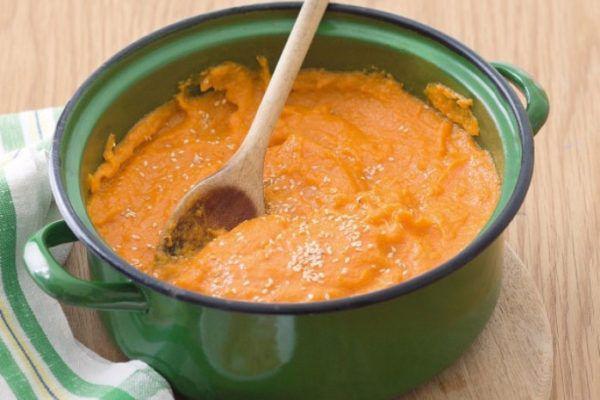
Carrot puree
Rice porridge with chicken fillet
Boil the chicken fillet in three glasses of water. Cooking time is about 40 minutes. The use of a small amount of salt is acceptable. The broth formed during cooking is used to cook rice. Grind the finished chicken meat, preferably with a blender. The fillet is added to the rice before cooking. The ingredients should cook together for 2-3 minutes. They need to be constantly stirred so that they become a homogeneous mass. Porridge should not be eaten immediately after cooking. It should be infused for 40-50 minutes.
Diarrhea menu for 3 days
| Food intake | 1 day | 2nd day | Day 3 |
|---|---|---|---|
 Breakfast |
A glass of sugar-free tea with croutons | A glass of sugar-free tea with croutons | A glass of compote with croutons |
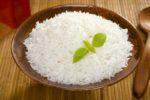 Snack |
3-4 tablespoons of rice, a glass of water | A glass of jelly | Baked apple |
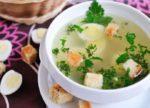 Dinner |
Chicken broth with croutons | Pumpkin puree soup | Buckwheat porridge, a glass of jelly |
 Afternoon snack |
A glass of jelly | Glass of compote | Glass of water |
 Dinner |
Carrot puree, a glass of compote | Curd casserole, a glass of tea | A piece of baked fish, a glass of tea |
Returning to the old diet
You can not return to the usual menu immediately after the symptoms of diarrhea have disappeared. The diet should not be stopped abruptly. This is especially true of those cases when the diarrhea lasted a long time, and the body had time to get rid of many foods.
The diet should be continued for another 7-10 days after the symptoms of the disease have disappeared. Then, fermented milk products can be introduced into the diet. You need to start with small portions - drink 200-250 g of milk, kefir or fermented baked milk per day. You can use yogurt. In this case, it is necessary to ensure that it does not contain preservatives. It is advisable to prepare yoghurts at home. A few days after entering the menu of fermented milk products, you can eat pasta with mild sauces. After a few more days, it is permissible to eat fresh vegetables and fruits.


